Sally Murphy's Blog, page 23
May 12, 2020
Worse Things: The Cover Story
As part of recent Readalong, I reflected about each of the covers of my three previous verse novels: Pearl Verses the World had had two different covers, and two different titles, for different editions; Toppling had had three covers and two titles, and Roses are Blue just the one cover. Additionally, there was branding. As you can see from the three Australian covers, whilst there’s not a series, the cover design links them to me, the author,and to the style of the book, all verse novels.
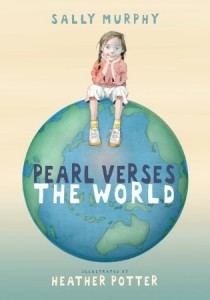
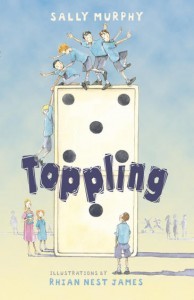
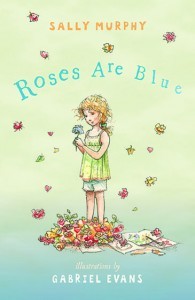
I have always loved these covers, and the branding part was exciting to me, because it felt like the brand was ‘Sally Murphy’ – even though of course there is a lot more to it than that. I felt that the cover design was a perfect match for the illustration style and for the form and content of the books. And feedback from readers young and old matched that. My post about the Pearl Verses the World cover, especially, drew dozens of comments here and on Facebook and Instagram.
However, the cover of my fourth verse novel, Worse Things is different. Very different.

Everything is different – the colour pallet, the font, the and the illustration style, too. The illustrations take up the whole cover, with the title part of the illustration. But guess what? I love it just as much as I loved those other covers. Why? Because I think it’s perfect for this book. And I think Sarah Davis is a genius.
Although still a verse novel, and having some similarities in style and even themes, Worse Things is a bit of a break away from the earlier ones. The age of the characters is slightly older than the characters in the earlier books, meaning it is likely to be enjoyed by slightly older readers – although I think readers who enjoy the first three will also connect with the fourth, and vice-versa.
Worse Things is also a multi voice novel, with three characters telling the story, and I love the way Sarah has captured key elements of each character’s life and their story, and used them on the cover. Readers will hopefully come back, after they’ve read the book, and be able to see why those images are there.
I’d love to hear what you think about this new cover. If you haven’t read the book, what do you think is suggested by the images? You can comment here, or on Instagram or Facebook.
And, if you’d like to get better acquainted with the cover, I turned it into a digital puzzle for you to have a go at! You’ll find that here.
May 7, 2020
Poetry Friday: Definition Poems
Welcome to Poetry Friday. What a week this past week has been! I have to admit that I was very worried about releasing a new book in the midst of this terrible pandemic. Why, I thought, would anyone be interested in my little book in the midst of such awful stuff happening. But the love I’ve felt – for my book, and for me, too – has really made me remember that people need good stuff to celebrate in the midst of bad times just as much as they in the midst of good times, or even in-between times. So thank you for your well wishes, your support, and best of all your enjoyment of my videos and ramblings and sharings.
Last week, as part of my release day post, I shared a poem which I term a ‘definition poem’. It isn’t an existing form – just something I played with as I wrote Worse Things. Here’s the one I shared:
BROKEN
[bro*ken] (adj)
Ruptured
torn
fragmented.
No longer whole
or functioning.
In need of repair.
(Copyright Sally Murphy, 2020)
And here’s another:
BELONG
[be*long](Verb)
To be part of
Appropriately placed
A piece of the whole.
To fit in
Match up
Meet up.
Appertain
Associate
Apply.
To be apt.
(Copyright Sally Murphy, 2020)
If you want to see what these look like in the book (and don’t have a copy at hand) you can see the spreads in this video, which was put together for the Walker Books website. Broken appears at 0.47 and Belong at 1.24.
I had a lot of fun writing these definition poems. First I identified key words or themes that I was exploring at different points of the book. Then I got out my dictionaries and thesauruses and looked at the definitions and similes. Then I simply played with the words and phrases, perhaps adding new phrases, until I had a poem that I felt both defined the word and also connected with what was happening in the text.
Since I finished writing Worse Things I haven’t played with the form again, but this week I thought I might give it another go, inspired by things seen on my daily beach walks. First there’s this one, inspired not just by the gorgeous Flo, but by all the pups I watch on my walks (including the recently departed Skipper, who is sadly missed).
Here’s what I came up with.
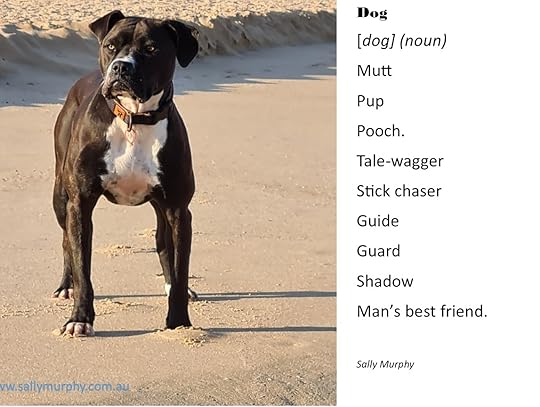
DOG
[dog] (noun)
Mutt
Pup
Pooch.
Tale-wagger
Stick chaser
Guide
Guard
Shadow
Man’s best friend
[Edited to add: yes, I do know dogs’ tails are spelled that way. The misspelling is a deliberate play on words!]

Beach
[beech] (noun)
Sandy shore
Oceanfront
Margin
Between sea and land
Coastline
Retreat
Embodiment of peace.
You might be able to pick the couple of lines that did not come from either dictionary or thesaurus. I especially found the definitions for beach a little inadequate for just how much it means to me.
So, over to you. I’d love to see if you have a word you’d like to define poetically? I like to think it’s a fairly simple challenge,because the dictionary and thesaurus are a wonderful starting point for finding lots of fodder.
Not up for the challenge? That’s okay. There’s all sorts of other poetry goodness on offer around the interweb, courtesy of my Poetry Friday friends. You’ll find the roundup over on Michelle’s blog, Today’s Little Ditty. See you there.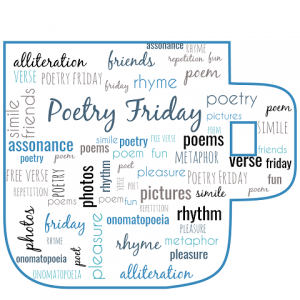
May 5, 2020
Worse Things: The Story Behind the Book Continues
Yesterday (you can see the post here) I talked about the background to Worse Things – from the initial selection of a theme and a topic, to the idea to have two viewpoint characters, who soon morphed into three. I touched on having tried to use three points of view (first second and third). The idea initially was that my two characters would be aware of each other but not really interact directly – and so when one was watching the other, they would refer to them as ‘you’. From there grew the idea that this watcher could be a third character. The idea to use first and third person for the two initial characters – who became Blake and Jolene – did not last long into the first draft. I have always written my verse novels in first person ‘I’ and I just couldn’t convince Jolene to let me tell her story as on observer (she/they). It became apparent that she wanted to speak for herself. So I had two first person characters.
The third character, Amed, let me persist with something akin to second person. Initially he was a watcher, observing the other characters and talking about what he saw. He was nameless, to the reader, and this, I hoped, would reflect the fact that the others ignored him, but that he was really a wise observer, in spite of his language difficulties. However, tow problems emerged. Although Amed was talking about ‘you’ (meaning either Blake or Jolene, whoever he was watching), I also wanted to gradually reveal his own story. I needed him to tell us his own thoughts and experiences. And so, he became another first person narrator – although he does still use second person to talk (in his head) to each of the other characters, as in his opening poem, which begins “You can’t see me watching you…” Getting Amed’s voice right was the most challenging – initially he was doing a lot of watching and not enough of anything else, and he came across as a bit too stalkerish.
Finally, though, I had the three voices, and the three sports and I managed to get going on bringing their stories to life. Although this process was more convoluted than my earlier verse novels, what was similar in my writing process was that I really didn’t know their full stories until I started writing. Each character’s story unfolded as I wrote. Parts of the story appeared before others, so it wasn’t written as sequentially as the others either. It felt a little more of a jigsaw puzzle – piecing together the different poems, the different storylines until it gradually came together.
The other thing that happened along the way was that I realised that my plan to write something less emotionally challenging had failed. Without giving two much away, some pretty tough stuff happens in this book. And I balked at some of it. I tried to convince my characters that they didn’t need all of that stuff happening – but they were insistent. It seems I never win these battles with my characters but, looking back, I know they are always right, and that in spite of the emotional toll, I like finding a way to tell such stories.
I had feedback of various drafts and parts of drafts from my doctoral supervisors and, when I was happy with it, I put it aside to work on other aspects of my thesis. This in part explains the six years it took to get to publication. But there was also, in that six years, quite a bit of toing and froing with the publisher, to get it right for them. In the end, I had to set aside trying to get it published, and complete the thesis, because the demands of a doctoral thesis, even in creative writing, and the demands of commercial publication, are different and often competing.
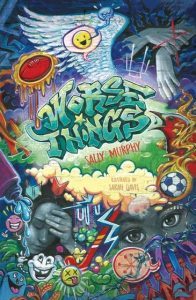 Finally, though, I finished the PhD and passed (I even got to wear a floppy hat to graduate) and then I could attend once more to trying to get Worse Things published. To cut a long story short, eventually Walker Books decided the time was right, and the manuscript was right, and said yes. Then Sarah Davis read it, and set to work illustrating and designing that amazing character. And now, here it is, out in the world, ready for you (and you – and you too) to read.
Finally, though, I finished the PhD and passed (I even got to wear a floppy hat to graduate) and then I could attend once more to trying to get Worse Things published. To cut a long story short, eventually Walker Books decided the time was right, and the manuscript was right, and said yes. Then Sarah Davis read it, and set to work illustrating and designing that amazing character. And now, here it is, out in the world, ready for you (and you – and you too) to read.
Worse Things: The Story Behind the Book
Wow. What a reaction! Thank you so much to everyone who has joined with me here on my blog, on Facebook, Instagram, Twitter and, of course, in real life, to celebrate the release of Worse Things. I still hope to hold a ‘real’ launch at some point, but I have certainly felt the love for my new book baby in its first few days out in the world.
Today I thought I’d share a little about the story behind the book, as I did with Pearl Verses the World, 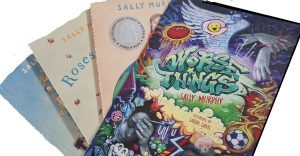 Toppling and Roses are Blue over the last few weeks. When Roses are Blue was published, back in 2014, I had little idea it would take another six years before my next verse novel was published. In fact, I’d already started work on Worse Things by then.
Toppling and Roses are Blue over the last few weeks. When Roses are Blue was published, back in 2014, I had little idea it would take another six years before my next verse novel was published. In fact, I’d already started work on Worse Things by then.
When I started planning Worse Things I knew that I wanted to write something that stood apart from the first three. I wanted to challenge myself to do something a bit different. One reason for this was the emotional toll writing on such serious topics took on me each time, but another reason as that I enrolled in a Doctoral program at university, and this verse novel was going to part of my doctorate. So I wanted it to take me on a learning journey. And oh boy it did.
The topic of my doctoral thesis was Belonging – both as a theme within children’s poetry, as well as where poetry belonged. As well as writing some chapters about these topics, I also decided to write a series of creative works – a collection of poems for young children, a second collection for middle primary aged children, and a verse novel, for middle grade readers. The collections would be linked by the theme of belonging.
So, I had a theme, which is not where I would usually start my story. But I also had an idea for a story I’d been toying with for quite a while: a sport story. I’ve always loved sport – in my younger days I played (not all at the same time): tennis, basketball, hockey, squash, netball, swimming and gymnastics as well as, at school, all kinds of sports including cross country running, athletics, teeball, softball, soccer, badminton and more. These days I still swim, including competing in some open water swimming. My six kids, too, played a lot of sport, including most of those I’ve listed, as well as AFL (footy), rugby, cricket and volleyball. I’ve probably forgotten a few. The result of all this sporting love is that I have spent a lot of time either playing or watching sport – and that’s not to mention the professional sports I love watching.
One football season my youngest two sons had a really interesting time: one son broke his thumb (the same thumb!) twice in the same season (and then again 18 months later) and the other dislocated his shoulder playing footy in the school playground. As a result they both missed most of the season. But I was the team manager for one of their teams, and on the club committee, and then the boys took up umpiring, which they could still do while injured – and I spent just as much time on the sidelines that year as I would have if they’d played. Maybe more. And a lot of time at medical and physiotherapy appointments.
One night over dinner I randomly suggested I should write a footy story. I never write about my own kids but, on this occasion, they reacted enthusiastically, and started chipping in ideas, mostly drawn from their own experiences. I very quickly realised that I couldn’t use most of these experiences – because they involved other people, especially the ones from their umpiring experiences. I did not want to be sued by some of the parents involved! But I did know that both injury and umpiring could form part of a story.
It was only when I started my doctorate though, that I realised that sport and belonging had a lot in common because team sports can really build a sense of being part of something. Conversely, they can also make you feel left out ( I have a really vivid memory of being about 8 and being part of a basketball team where I was left on the sideline for three quarters of the game because I wasn’t good enough. It was a parent on the sideline who told the coach, in my hearing, not to put me on the court!)
So, from these two things – football experiences, and the theme I’d chosen, that a story started to emerge. The choice to use multiple sports and voices grew from there, and from my desire to explore different people’s experiences.
Initially, however, I only planned two characters – Blake, the footy boy – and Jolene the hockey girl. But I had this idea to experiment with point of view – I wanted to write one character using first person (I), and the other using third person ‘they’ – and then play around with second person, with one or both of them observing the other. This third voice very quickly became a character of his own, revealing himself as Amed, the soccer boy. And although the first, second, third person idea ended up on the scrap heap early on, the exploration of three separate but overlapping stories is what developed into Worse Things.
(To be continued in tomorrow’s post)
April 30, 2020
Welcome Worse Things!
It’s Poetry Friday – and what a Friday it is, because it’s also the release day of my brand new verse novel Worse Things. Over the past three weeks I have loved sharing with readers new and not so new my previous three verse novels. It’s been lots of fun rediscovering those book babies, and the culmination of that sharing is the opportunity to now introduce you to Worse Things.
First, the stunning cover, designed and illustrated by the amazing Sarah Davis. 
There is a lot happening in this cover – which is perfect, because there is a LOT happening in this book. Sarah has captured key aspects of the story, and of each of three viewpoint characters. If you’ve been following my readalong, or know my work, you’ll note that this cover is very different than those of my previous verse novels. That’s because this one is a bit different than the others – it’s for a slightly older audience, and has three viewpoint characters rather than one, for starters.
Intrigued? Want to know more? It is such lovely weather here in my part of Australia at the moment that I thought I’d sit on my patio and chat about the book.
If you look verrrry closely you might see I am wearing special earrings – I have a thing about finding earrings to match each new book. In one ear is a soccer ball, and in the other crossed hockey sticks. I’ve ordered some football ones too, but they are yet to arrive – but when they do, I’ll have a problem – three different earrings, only two ears! Maybe I’ll get my nose pierced (not!).
Want a taste of the book? Here’s chapter one:
And, because it’s poetry Friday, I thought I’d share one of the poems for you. This is one of several ‘definition’ poems scattered throughout the book. Because Amed is learning English, the idea came to me to define some of the key words, as if they are in the dictionary. This is the first one, which you’ll hear in the video, too.
BROKEN
[bro*ken] (adj)
Ruptured
torn
fragmented.
No longer whole
or functioning.
In need of repair.
(Copyright Sally Murphy, 2020)
This poem comes after Blake breaks his arm but, as you might sense just from chapter one, each of the three characters is a little bit broken, so it seems really apt to include this poem.
Worse Things is, as I said, out now and, if you’re in Australia available from all good bookstores. If you can’t get to a bookstore, or are not based in Australia, it is available online.
Thanks for dropping in on this auspicious day. If you would like to join in the celebration on social media, you can use the hashtags #worsethings and #readwithsally on Instagram, Twitter or Facebook.
And now, I encourage you to head off and see what other poetry goodness is available this Poetry Friday. The roundup is being hosted by Elizabeth Steinglass who, coincidentally, is sharing soccer poems.
Have a wonderful Friday. I know I will – not only is it my book birthday, but it’s also my mum’s birthday – happy birthday Mum!
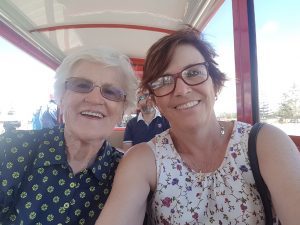
April 29, 2020
Readalong Post #12: 10 Things You Can Do With Roses are Blue
Welcome back to my Readalong. (If you’ve just dropped in for the first time, I have been running a Readalong here for the past three weeks, reading (or rereading) and talking about my previous three verse novels, in anticipation of the release of my brand new one, Worse Things, this Friday (only two more sleeps!).
Today, before I move on from Roses are Blue, I wanted to share ten simple things you can do while  reading it, after reading it, or possibly even if you haven’t read it. These are not teaching notes – you can find those here or here. These are ways any reader can explore the book in fun or interesting ways – though if you are a teacher, you could adapt them for classroom use. So, here they are.
reading it, after reading it, or possibly even if you haven’t read it. These are not teaching notes – you can find those here or here. These are ways any reader can explore the book in fun or interesting ways – though if you are a teacher, you could adapt them for classroom use. So, here they are.
Read it. I’ve said this for the previous two books, as well as eleventy million times to the teachers I train at university, the kids I talk to in schools and at festivals, in fact anyone who will listen – the best thing you can do with a book is read it, just for its own sake. Follow up activities can be wonderful, but sometimes a reader just wants to read a book, or to have it read to them. Roses are Blue is perfect to read on your own, or aloud to someone else.
Blue roses? They’re not a thing are they? In fact, breeding a blue rose is a life goal for some flower enthusiasts. Use a search engine, to see if you can learn more about why blue roses are rare, and who is trying to cultivate them.
Speaking of blue roses – why not make one of your own. This video shows you how to make a lovely red rose. Use blue paper and you’ll have a blue one!
4. Make a Mothers Day Card. Roses are Blue is a story about mothers and daughters, and is set in the lead up to Mothers Day. Coincidentally, it’s Mothers Day next week – so now is a perfect time to make a card. Maybe a bunch of blue roses too!
5. Examine the cover. Unlike Pearl Verses the World and Toppling, Roses are Blue has only had one cover design, so instead of posting about the different covers, I made the one it has into a digital jigsaw. See if you can beat my time of 3 and a half minutes. You’ll find it here.
6. Compare it. If you have read another of my verse novels, take a few moments to decide which you like best – and why. And I have a giveaway. If you post on Instagram, Twitter or my Facebook page with a photo of one of my books, and a line or two saying why it’s your favourite, I will post a signed bookmark to the first 10 people. Tag your post #readwithsally and send me a message so I can arrange to post it.
7. Paint something. Amber loves painting – and so did her mum. Grab a sheet of paper and some paints – or pencils or crayons or textas – and just create something.
8. Share it. If you loved Roses are Blue, lend it to someone – or, if you borrowed it from a library, encourage your friend to borrow it when you return it.
9. Write a roses are red poem. The original poem – and song – was roses are red, violets are blue, sugar is sweet, and so are you’ but for years and years people have had fun writing silly versions of this poem, or writing similarly serious ones. Here’s my attempt:
Roses are red
Violets are Blue
Actually they’re purple
But nothing rhymes with purple.
I’m sure you can do something better!
Read it again! If you love a book, you can read it twice. Or three times. Or a zillion times. And lots of books get better on the rereading, because you notice thing you didn’t notice the first time.
Thanks so much for reading along with me. I hope you’ll drop in Friday – and beyond – as I celebrate the release of Worse Things.

April 27, 2020
Readalong Post #11: The Story Behind Roses are Blue
As with both Pearl Verses the World and Toppling, I’d like to share a bit about the process behind the 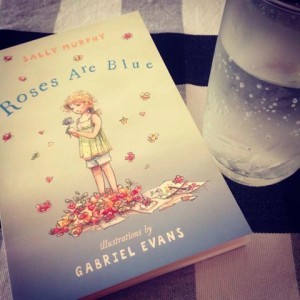 writing of Roses are Blue. While the first two came out within a year of each other, Roses are Blue came four years after Toppling – which seemed an age at the time. Little did I know that it would six years after Roses came out before my next verse novel would be published. Now THAT has seemed an interminable age.
writing of Roses are Blue. While the first two came out within a year of each other, Roses are Blue came four years after Toppling – which seemed an age at the time. Little did I know that it would six years after Roses came out before my next verse novel would be published. Now THAT has seemed an interminable age.
Back to Roses are Blue – the four year gap is representative of the struggle to write my third verse novel. The first two were really successful – winning awards and critical acclaim, and selling well, which was amazing, but also did lead to some (mostly self-imposed) pressure to keep producing work of that quality. Additionally, I had found writing and talking about such difficult topics emotionally draining, and I was really keen that my next verse novel would be lighter and, dare I say it, fluffier. So I tried to write a verse novel from a cat’s perspective (literally fluffier). I really liked that story (and still do), but my publisher didn’t, and it is languishing in my metaphorical bottom drawer.
But I was still determined to keep writing verse novels, and was keen, because the mothers in my novels are often key figures, to write a story about mothers and daughters. The daughter character, who later revealed her name to be Amber, started talking to me very quickly – wanting me to write all about her different mum. But when I started writing I had no idea just what it was about her mum that would be different. When I realised what it would be – that Mum is not just different from other mums, but that, as the result of a terrible accident, she is really different than she was a year ago – I knew I had a story. But what I didn’t know as whether I could tell it. I had been looking for a lighter topic and had, somehow, found myself writing one that was anything but light.
But I listened to Amber and I wrote the story and thought that, although it was sad, it was an important story. But my publisher was not keen – because it was too sad. This surprised me – I was, after all, known for writing sad stories. My previous two sad stories had won awards. I was not impressed. But they were right (publishers usually are!). The story I had written was lacking the most important ingredient – hope. I knew in my heart that there was hope for Amber (and her mum) at the end of the story – but somehow it was not there on the page. Those who read that first manuscript were left unsatisfied.
It took a lot of rewriting to find a way to put that hope there for the reader – and Amber – to find. One of the threads that was strengthened to give that hope was the story of Leroy, a minor character initially, who because more important in subsequent drafts, and who, I think, helps to demonstrate why Amber has some of the feelings she does.
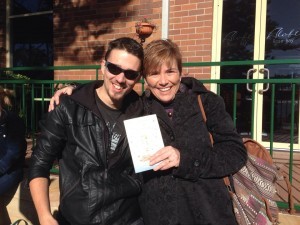 The story went back and forth a bit before it was finally accepted but eventually I got it right and it was accepted and then published. One of the bonuses of this delay was that, by the time it was accepted, the up and coming illustrator Gabriel Evans (pictured with left) was available, and given the task of bringing Amber and her world to life, which he did so beautifully.
The story went back and forth a bit before it was finally accepted but eventually I got it right and it was accepted and then published. One of the bonuses of this delay was that, by the time it was accepted, the up and coming illustrator Gabriel Evans (pictured with left) was available, and given the task of bringing Amber and her world to life, which he did so beautifully.
Roses are Blue was published in 2014, and is still in print. Little did I know then that it would be SIX years till my next verse novel was released – but now, that six years is just days away from being up. I’m excited!
April 23, 2020
Readalong Post #10: Introducing Roses are Blue
It’s Poetry Friday, and also day one of the third week in my Readalong. This week I am delighted to invite you to read along with me (or, if you can’t easily get hold of a copy, just learn a bit more about) Roses are Blue. Firstly, here’s the beautiful cover, featuring the illustrative genius of Gabriel Evans.

In the last two weeks I have introduced each book by sharing the book trailer but, I don’t have one for Roses are Blue. So, instead I thought I might offer an insight into the book by quoting from the excellent review librarian Debra Pearson wrote of the book when it was included in the The IBBY Collection of Books for Young People with Disabilities in 2015.
In this verse novel for young readers, narrator Amber Rose struggles to reconcile the two sharply-divided parts of her life: before and after a terrible accident.
You can read the rest of Debra’s thorough review here.
To further introduce you to the story, here’s a clip of me reading the opening pages:
And a little glimpse inside:

In my next few posts I’ll share a bit more about this verse novel. If you have a copy, I’d love if you would read along with me – and even ask me some questions. If you’d like to buy a copy, ask your local bookstore. It is also available online. And if you’d like to chat about the book, share a photo of it on your bookshelf or anything else, use the hashtags #blueroses or #readwithsally, and tag me on Instagram,Facebook or Twitter.
This week’s Poetry Friday roundup is hosted by Christie at Wondering and Wondering (now isn’t that an excellent name for a blog!). Head there to see what other poetry goodness is on offer around the blogosphere and to check out Christie’s very celever bird poem, inspried by Thoreau (and that hashtag: #ThoreaulyInspired – so clever!)
April 22, 2020
Readalong Post #9: 10 Simple Things to do with Toppling
Thanks again to everyone who’s been reading along with me. Today’s post is the last focusing on 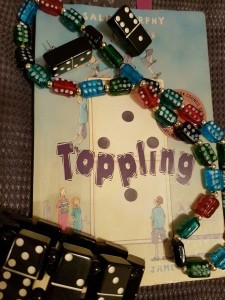 Toppling – and tomorrow we move on to Roses are Blue. And that means that it will just ONE WEEK until the release of Worse Things. I am so excited about introducing my newest book-baby to the world.
Toppling – and tomorrow we move on to Roses are Blue. And that means that it will just ONE WEEK until the release of Worse Things. I am so excited about introducing my newest book-baby to the world.
For today, though, I want to share some things you can do with Toppling. These aren’t teaching notes – you’ll find more formal teaching ideas here and here. Rather than replicate those, the following ten ideas are more simple things you can do on your own, with your family, or in a classroom. So, here’s the list:
Read it. The number one thing you can do with any book is simply read it. On your own, with a friend, at the same time as the author (as with this readalong). In bed, on a couch, out in the garden, or out loud in the classroom (teachers remember no one is ever too old to be read TO). And sometimes, just reading the book is all that’s needed – no worksheets, comprehension questions or anything.
Journal about it. Although I’ve said in number one that comprehension questions are not always necessary, sometimes it is nice to have time to really reflect on a book – either as a whole or, after each reading session. Grab your journal – if you haven’t got one, now’s a good time. Any notebook or exercises will do – and a pen and just write about your reactions to what you’ve just read. How did it make you feel? Which bits di you like? Which bits annoyed you? What do you think will happen next?
Vote for the best cover. As I posted about here, Toppling has had three different covers and two different tiles, in the three countries it’s been published in. After you’ve read the book, have a look at the three covers and decide which one you prefer. If your friends or classmates have read it too, you might set up a poll.
After you’ve decided which of the published covers you like best, you might like to design a fourth cover. What do you think should be on it? You might borrow ideas from the published covers, or you might have a better idea. If you post it on Instagram or elsewhere online, send me a message and I’ll tell you what I think.
Write a review. A book review can be long and detailed, or it can be really short. There are reviews of Toppling here at Goodreads, and also here and here to give you some ideas.
Grab some dominoes and set up a topple of your own. It doesn’t have to be as big as this one:
Got no dominoes? Maybe you could try a book topple instead!
Or be creative. What else could you topple? Maybe don’t waste your biscuits, but this is pretty epic:
If you do set up a topple and post it anywhere online, let me know and I’ll watch and comment. – here’s one here:
Play a game of dominoes. Although John in the book doesn’t ever play the actual dominoes game, there’s no reason you can’t. Don’t own any dominoes? You can print some out here. You can make them stronger by gluing them to some cardboard.
Write a poem. On page 15 of Toppling John writes a poem introducing his best mate Dominic. It’s basically a list poem. On pages 18 and 19 he shares shorter poems about his other three friends. Read these to get some ideas, then write a poem introducing yourself or one of your friends.
One of the questions I am most often asked about Toppling is what happens next. After you’ve read it, why not write a new chapter? You get to decide what happens next.
Ask the author (that’s me!) a question. You can post it in the comments below, email me through this contact form, or ask the question on Twitter, Instagram or Facebook. I love questions – they keep me on my toes.
I’d love to hear how you go with any of these activities – or if you have better ones to suggest.
Thanks for reading along with me.
April 20, 2020
Readalong Post #8: A Trio of Toppling Covers
Last week, as part of my Readalong, I posted about the two different covers – and titles – that Pearl Verses the World had when it was published in Australia and the UK. That topic drew a lot of reaction, with comments on my own Facebook page being universally in favour of the Australian cover, but the dozens of comments on the SCBWI West page more divided, though still mostly in favour of the Australian one.
This week, I thought it might be fun to repeat the process by looking at the covers for Toppling which had not two, but three different covers – in Australia, the USA and the UK where, again, the title was also changed.
First, the Australian cover:
I love Rhian Nest James’ illustrations and the cleverness of having John and his four friends balanced (precariously, in Dominic’s case) on top of the domino. Readers who know the story will also pick out Ky looking up, and Lily and Miss Timms to the left. Very clever, right down to the choice of the number of dots on the domino. Another thing I love is the way the Walker Australia team designed the cover so that, while it’s different than Pearl Verses the World, its design links my two books visually.
But, when the book was published in the US, Candlewick decided to change the cover:

Although they kept the font and colour palette, you can see that the illustration is new, commissioned for this edition. It’s a lot simpler – the focus is squarely on John, the viewpoint character, and his connection with dominoes, as well as the challenges he is facing keeping everything in order.
Lastly, Walker UK created a very different cover. Having change the title of Pearl Verses the World to simply Pearl, it was felt that the books would be better linked if names were also used in the title of this book. So, Toppling became John and Dom, and the cover used a similar design to the one for Pearl:

Everything is different than the Australian and US covers: the font, the illustrations, the colours and layout, and there’s the addition of a tag line. There’s not a domino in sight either. I do like this image, but I must confess I mourned the loss of the title, and the dominoes. although of course they are featured in the story, which remained unchanged.
So, three covers, two titles. I’ll admit the Australian version is my favourite – but I’m curious to know which you prefer? Leave a comment, if you like.



